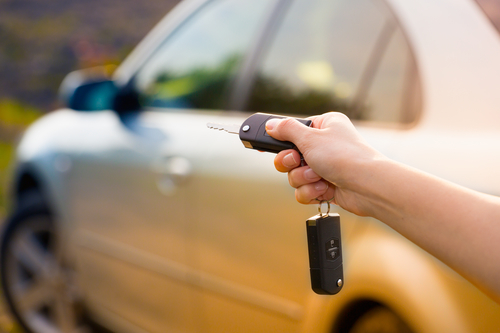Frequently Asked Questions
All You Ever Wanted to Know About Insurance
Personal Insurance: Auto Insurance
Rates
Why similar vehicles may produce different premiums
When shopping for a vehicle, most people believe that newer, more expensive cars cost more to insure.
 However, there are several other factors that help determine how much it costs to insure a vehicle. These factors can result in a difference in premium between seemingly similar makes and models.
However, there are several other factors that help determine how much it costs to insure a vehicle. These factors can result in a difference in premium between seemingly similar makes and models.
If (you are) price-conscious, there are a few things to remember, even if they involve comparing similar types of vehicles.
Vehicle design
Some of the most important factors used to develop rates are found in the inherent design of the vehicle. In addition to cost, damageability and occupant injurability factors are also considered when developing rating plans for new automobiles. These factors help to determine how much premium should be charged for a vehicle.
Damageability is a measurement of how much it will cost to repair a vehicle after an accident. Construction features such as bumper design or the presence of crumple zones may impact a vehicle’s damageability rating.
Occupant injurability is a measure of how likely a passenger in a vehicle is to be injured in an accident. This can be affected by factors such as the strength of the roof – which can protect a passenger in the event of a rollover crash – and are directly related to the cost to insure the occupants of the vehicle.
Vehicle size and weight affect both damageability and occupant injurability. Small, light-weight vehicles have less area to absorb the force of a crash, so damage to the vehicle is more severe and injury to passengers is more common.
Safety technology
You may (have) questions (because you) feel that (your) vehicle contains advanced safety technology (and) should be paying a lower premium. There are a few reasons this may not necessarily be the case.
According to recent information from the Insurance Institute for Highway Safety (IIHS), the reality is that not all safety features are performing as expected.
For example, lane departure warning systems have not yet affected insurance claims. This feature is commonly found to be deactivated by vehicle owners, which impacts the effectiveness in avoiding crashes. Blind spot detection is another piece of technology that is intended to help avoid an accident; however, IIHS results are not yet conclusive.
The IIHS has found two crash avoidance systems that help reduce accidents. One of these is the front-crash prevention system, which includes systems with forward collision warning only or with forward collision warning and autobrake.
Front-crash prevention systems are lowering claim frequency; however, they have been found to prevent fewer than half of the crashes they are designed to prevent.
Adaptive headlights
In addition to front-crash prevention systems, the IIHS has also found adaptive headlights lower the number of crashes. Adaptive headlights shift the direction of the headlight as you steer to allow the driver to see better on curves at night.
This new technology can be expensive. Therefore, while the claim frequency has gone down, the claim severity is likely to increase until the cost of the technology decreases.
To learn more about what vehicles are the most crashworthy, visit the read the IIHS’s crashworthiness article here. There (you) will find a breakdown of which vehicles scored highest in crash-safety testing.
(Article republished with permission from Auto-Owners corporate communications office.)


